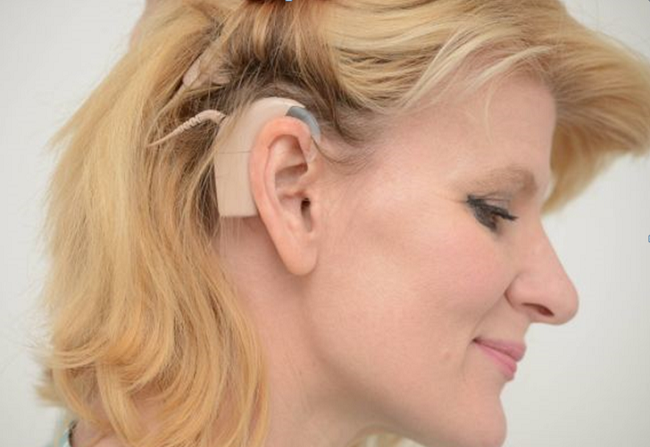
Joanne Milne is a 40-year-old woman from Gateshead, England, born with Usher Syndrome, a rare and devastating genetic disorder that left her deaf since birth and blind since her twenties. Recently, Milne’s fitting of cochlear implants at Birmingham’s Queen Elizabeth hospital resulted in unparalleled success, giving her the ability to hear for the first time in her life.
“The switch-on was the most emotional and overwhelming experience of my life and I'm still in shock now,” Milne said. “Hearing things for the first time is so, so emotional, from the ping of a light switch to running water. I can't stop crying.” Milne recalls the rush of stimuli that immediately swept her brain when the electrodes were first activated; she compared the sound of high heels striking a nearby hallway floor to what she thought was a roof caving in.
Even more surprising was hearing her own voice as she recited the days of the week following her speech therapist’s example. For most of us, the sudden onset of alien stimuli is impossible to relate to any experience we’ve previously encountered, but that experience is especially magnified if the implant is made in an adult. All sounds are new and incomparable to any known experience. Milne’s reaction was recorded by her mother; watch it below.
Cochlear implants are quite the technical feat in and of themselves. The earliest implant with electrical stimulation was performed in 1957, but speech understanding via multichannel cochlear implants truly began in 1984. The contemporary implant is made up of two parts: a surgically implanted unit placed within the skull and an external nonsurgically implanted word speech processor that’s worn behind the ear.
The device functions as a treatment option for children and adults that are unable to receive sufficient benefits from hearing aids. It acts by sidestepping the nonfunctioning auditory nerve ends in the inner ear and activating the auditory (hearing) nerve that allows the recipient to hear. A microphone located on the external component converts sounds to encoded signals that are transmitted via radio waves to the surgically implanted unit. This coded information is then sent by the internal receiver using an electrode array to activate the auditory nerve fibers in the cochlea part of the inner ear. Finally, the stimulated auditory nerves communicate the sound signals to brain for sound perception.
The degree of hearing restored by a cochlear implant depends on multiple factors: degree of deafness, length, age, auditory skills at the onset, brain adaptation, and cause of deafness. Cochlear implants do not completely restore hearing, but enhance auditory perception for speech comprehension.
Advertisement
Learn more about Electronic Products Magazine





